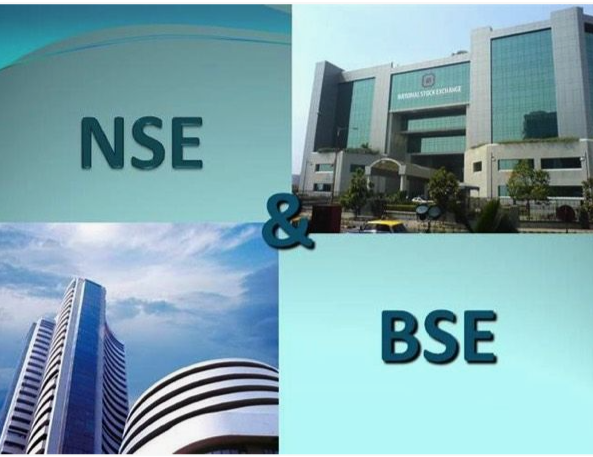When diving into the world of stock trading in India, one often encounters two primary options: the National Stock Exchange (NSE) and the Bombay Stock Exchange (BSE). These exchanges serve as premier platforms where investors buy and sell shares, and they play a critical role in determining trading strategies and outcomes. Understanding the intricacies of both can help in making an informed decision. This article will explore NSE vs BSE, compare their key features, and analyze factors like BSE trading time and transaction costs.
NSE vs BSE: An Overview
National Stock Exchange (NSE)
Established in 1992, the NSE is relatively younger compared to the BSE but has quickly gained traction and popularity. When comparing NSE vs BSE, the NSE boasts over 1,600 listed companies and is renowned for its technological sophistication and electronic trading systems. The Nifty 50 index, often used as a benchmark, represents the performance of major companies listed on the NSE.
Bombay Stock Exchange (BSE)
Founded in 1875, the BSE holds the distinction of being Asia’s oldest stock exchange. The BSE lists over 5,500 companies, making it one of the largest exchanges in the world by the number of listed entities. The SENSEX index, which includes 30 well-established and financially sound companies, is often used to gauge market sentiment.
Trading Hours: BSE Trading Time vs. NSE Trading Time
An essential aspect of stock trading is understanding the trading hours of each exchange.
– BSE Trading Time: The BSE operates from 9:15 AM to 3:30 PM (IST), Monday through Friday. The pre-opening session starts at 9:00 AM and lasts for 15 minutes.
– NSE Trading Time: The NSE also operates from 9:15 AM to 3:30 PM (IST), Monday through Friday, with a similar pre-opening session beginning at 9:00 AM.
Given the identical trading hours, your choice between NSE and BSE won’t be influenced by trading times but will hinge on other factors like liquidity, transaction costs, and the variety of listed companies.
Liquidity and Trading Volume
Liquidity refers to how easily an asset can be bought or sold in the market without affecting its price. Higher liquidity generally leads to quicker transactions and potentially better prices.
– NSE: With a higher average daily trading volume compared to the BSE, the NSE often provides more liquidity. This is particularly beneficial for traders who deal in large volumes.
– BSE: While the BSE may offer lower liquidity in comparison, it holds a more extensive list of companies. This can be advantageous for investors looking to diversify their portfolios across different sectors and industries.
Transaction Costs and Fees
When it comes to transaction costs, both exchanges have their own fee structures, which can influence the overall profitability of trades.
– NSE: Charges a transaction fee of 0.00325% on the total turnover for equity delivery trades.
– BSE: Imposes a transaction fee of 0.003% on the total turnover for equity delivery trades.
For instance, if an investor conducts an equity delivery trade worth INR 10,00,000:
– On the NSE, the transaction fee would be INR 10,00,000 * 0.00325% = INR 32.50.
– On the BSE, the transaction fee would be INR 10,00,000 * 0.003% = INR 30.00.
Indices and Benchmarking Tools
Indices serve as essential barometers that provide an overview of market performance.
– NSE: The Nifty 50 index is widely used for benchmarking. Comprising 50 diversified stocks across 13 sectors, it provides a broad market performance snapshot.
– BSE: The SENSEX index comprises 30 prominent companies and is one of the oldest and most-followed market indices in India.
Technological Edge and User Experience
– NSE: Known for its sophisticated trading platform, NOW (Neat on Web), and mobile trading apps. The NSE’s advanced technology provides swift execution and robust system infrastructure.
– BSE: Although the BSE has also made significant technological upgrades with its BOLT (BSE OnLine Trading) Plus system and mobile applications, it has somewhat lagged behind the NSE in terms of technology adoption.
Market Reach and Accessibility
– NSE: With a more extensive network of brokers and greater retail participation, the NSE often appears more accessible for average investors.
– BSE: The BSE’s vast history and extensive list of companies make it a vital platform for institutional investors and traders looking for varied investment opportunities.
Conclusion
Choosing between the NSE and the BSE for trading depends on multiple factors, including liquidity, transaction costs, technological infrastructure, and the range of listed companies. Both exchanges offer unique advantages and limitations, and your trading objectives will play a significant role in this decision.
Disclaimer: The information in this article is for educational purposes only and does not constitute financial advice. Investors must gauge all the pros and cons of trading in the Indian stock market and consider their financial situation, risk tolerance, and investment goals before making any trading decisions. Consult a qualified financial advisor for personalized advice.





